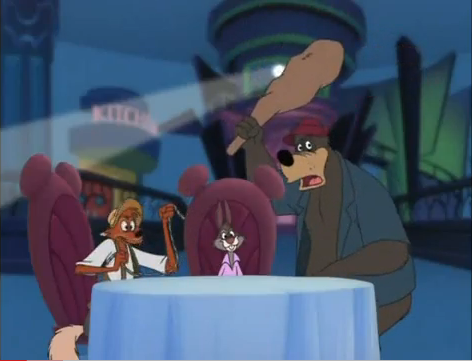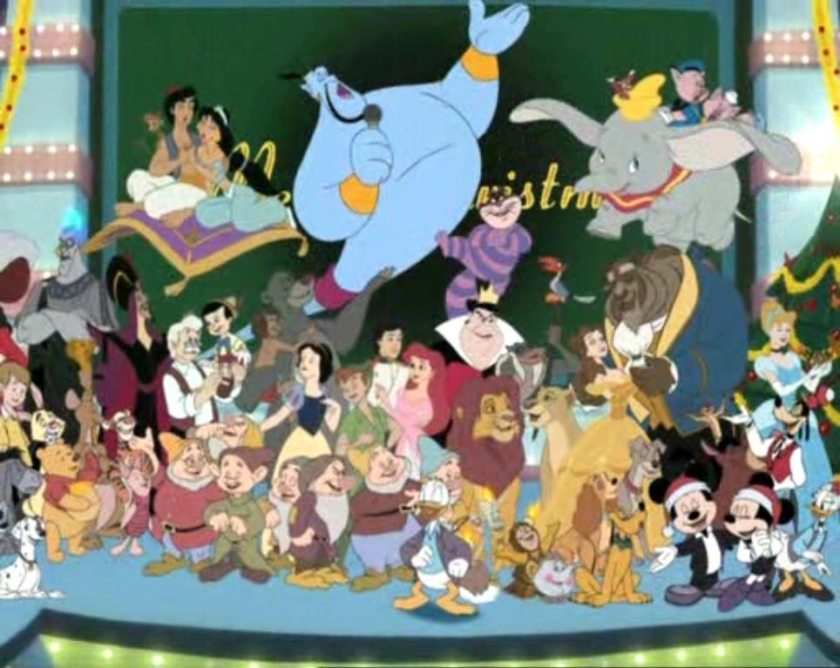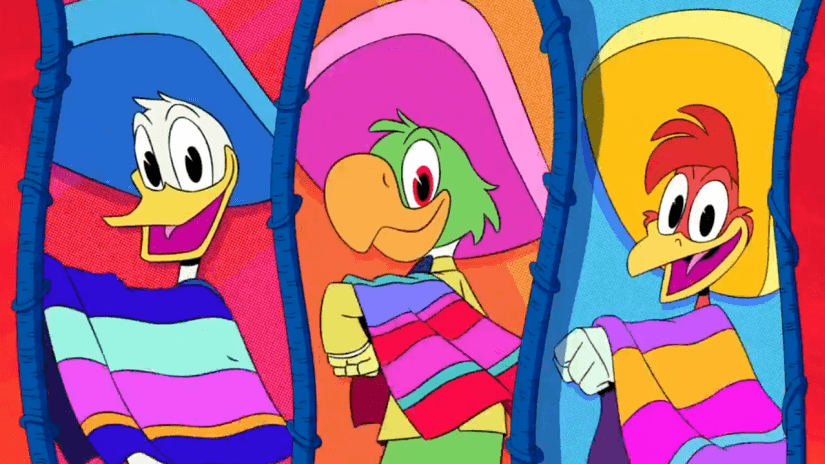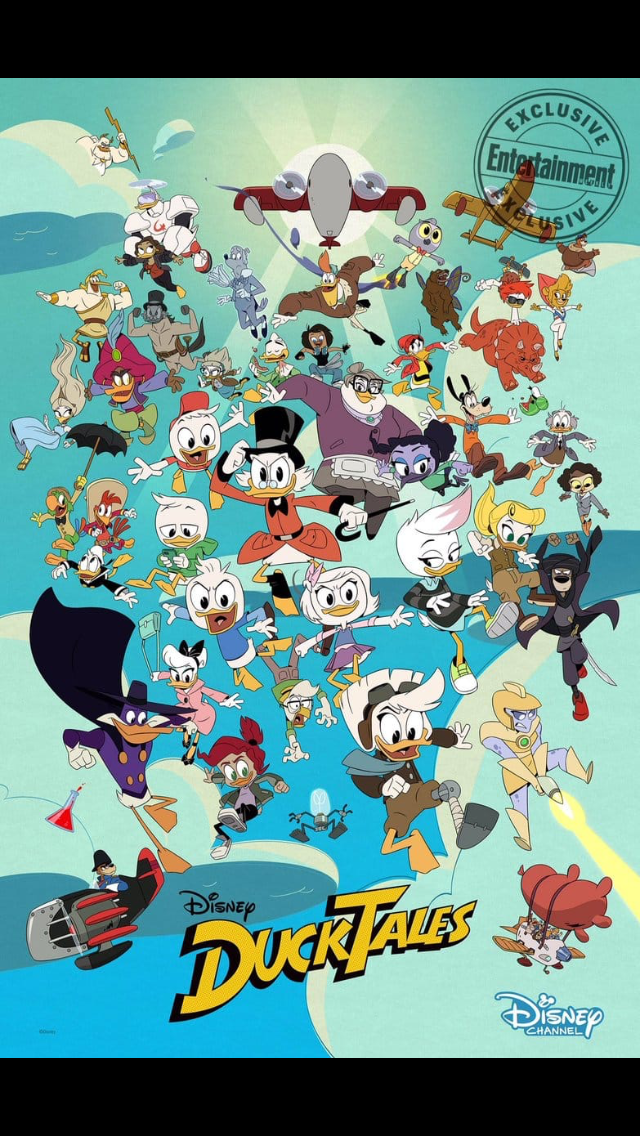
I have a complicated relationship with Disney. I think most of us do. If you don’t like Mickey Mouse or Disneyland, you probably like at least one of the fifty-plus animated features they’ve made. If cartoons aren’t your thing, you probably just like riding Space Mountain. If that’s not your cup of tea, maybe you get a kick out of watching Marvel or Star Wars. But maybe you’re not into stuff for nerds or kids. Well, how you liking watching ABC or all those games on ESPN? And if you missed the news lately, The Simpsons and Scott Ridley’s Aliens franchise are allied under the ears.
How much is too much? I’m not the first one to question this. But the jokes and observations over the past decade or so have risen ominously, like a billowing storm cloud. ABC. The Muppets. Pixar. Marvel. Maker Studios. Lucasfilm. 21st Century Fox. Hulu. Like a ravenous maw, Disney has consumed numerous companies at a troublesome rate. How worried should we be?
“What would Walt -“
Yeah, I’m gonna stop you right there, champ, and suggest you not finish that sentence even in thought. It’s pointless, moot, even. Wiser men than I have asked the dreaded question since the man’s death that cold morning of December 15th of 1966.

When Walt Disney died, the company was known for three things: animated cartoons, live action comedies, and theme park rides. At that time, Walt was just starting to branch out into thinking more ambitious projects like CalArts and E.P.C.O.T., projects so ludicrously unreachable the company could barely do more beyond building the college. Walt had established forty-plus years in Hollywood being the final say in all projects at the studio that even longtime nay-sayers were ready to jump when he said so. But once Walt died, no one knew what the hell the company should do. For a solid twenty years, the answer was generally “I dunno, whatever we’ve been doing, I guess”.
What, then, were Walt’s designs when he was alive? I’m usually happy to take the official documentations at face value that Walt wasn’t in it for the money, but if I had to be cynical, I’d say he probably did have some dreams of making it big, but his odd jobs as a kid show he didn’t have much of a plan. Walt was a creative guy, to be sure, but he wasn’t a particularly gifted actor or artist, so options were pretty limited back in the 1920’s. But what’s clear is Walt frequently drove the company deep into debt with every crazy venture, and he didn’t even pay off his debt to the bank that started in the thirties until 1961. That doesn’t sound like a greedy capitalist to me. That sounds more like a guy who just kept playing around with whatever he felt like and just happened to have some lucky stars on his side that allowed him to get rich and famous.
What did Walt feel about his competitors? The information I find is scant at best, but I think it’s mostly because very few allusions to the Looney Tunes or Tom and Jerry amounted to even cute anecdotes. One story illustrates Walt hiring Richard Fleischer, son of Betty Boop and Popeye cartoon creator Max Fleischer, to direct 20,000 Leagues Under the Sea. Richard ended up asking his father’s permission, who not only gave it, but asked to pass on a compliment about having good taste in directors. According to Fleischer, the men remained friends for years afterward. And even though Chuck Jones and Friz Freleng worked at the Disney studio, there is little mention of their relevance outside the company.

The fact of the matter is, “What Walt would’ve said/done/wanted/thought” is a meaningless endeavor. We may never know. We never will know. Walt lived well after the unregulated landscape of Carnegie and Rockefeller, and long before today’s economic turbulence. Maybe Walt might not have wanted the company to be as big as it’s gotten to be, or maybe he did. Either way, let’s put that blind speculation to rest and move on.
A list of charges
At some point, we have to face facts and grow up. Sorry, Peter Pan, but it’s true. In the end, we have to realize that the things we like aren’t perfect.
Disney has done numerous things that are questionable, beyond the usual gripes, like removing River Country, the Rocket Rods debacle, the current remake fad, the failure of DisneyQuest, or the usual Hollywood shenanigans. I’m sure there are even actual legal crimes they’ve committed, but I wanted to actual dive into real, morally questionable acts Disney has pulled off even I have trouble defending.
1. The Sequel Era (1994 – 2008). From The Return of Jafar to The Little Mermaid III: Ariel’s Beginning, the company unleashed a barrage of direct-to-video sequels, produced by their television studios in Japan and Australia. In all, over 20 animated films received sequels from them, with eight of them getting more than one. While not a terrible crime, it did oversaturate the market with Disney animation, particularly with low-quality animation, stories that often failed to match the grandeur of the original, and often failed to have the whole cast return.

Weird how children’s entertainment is the only thing where parents say, “Who cares? It’s just for my kids.” Is it the same thing as having sex and violence in their entertainment? No, but don’t our children deserve the best in family entertainment, not just the table scraps?
2. Racism and sexism. These charges have been abundant, even rampant. After all, when you’ve been around for nearly 80% of the twentieth century, you go through the eras where blackface was comedy gold and “Women be crazy!” was acceptable. In the end, we get cartoons like Cannibal Capers, Mickey’s Man Friday, Mickey in Arabia, The Mad Dog, Mickey’s Mellerdrammer, Commando Duck, Californy ‘er Bust, and more that depict not-white people in a comical, often non-flattering light. Snow White makes dwarfs comic figures, Lady and the Tramp has Asian stereotypes, Peter Pan depicts Native Americans, Dumbo has its crows…need I bring up Song of the South?

The sexual politics have been just as sticky. The princesses have evolved from passive damsels like Snow White and Cinderella. Many forget, but there was a time Ariel was praised as a progressive figure, too. But it doesn’t change the fact that there are still problematic elements with some of the princesses, especially when being used as a gimmick to sell dresses and further enforcing archaic perceptions of femininity and beauty.
3. Product gaffes. Making merchandise is standard practice in the industry. But even Disney doesn’t always make the right call. Two particular examples are the Rad Repeatin’ Tarzan and the Maui costume. In the former, a plastic figurine of the 1999 movie character came with a trigger that swung his enclosed fist upward, and unleash his trademark yell. It takes less than no imagination to imagine what it ended up looking like he was doing.

For the Maui costume, promoting 2016’s Moana, kids could wear their very own brown body suit, complete with the demigod’s famous tattoos. Needless to say, Disney faced significant backlash for selling a costume that was the very embodiment of cultural appropriation.
4. Merida’s redesign. The heroine from the 2012 Pixar film was made to be a true feminist icon in the 21st century. However, that changed when her overall design was altered after the film was released. Not in the movie, but for her appearance on products. I assume this was to make her look similar to her fellow hand-drawn princesses, but the changes made were…questionable.

Her famous unkempt frizz was smoothed out to look more flowing, her trademark bow was rarely shown, her dress billowed and sparkled, her eyes more seductive, and her figure was made curvier and thinner. That’s not creepy, is it?
5. The Sweatbox. The Emperor’s New Groove went through numerous obstacles before achieving the final product. Trudie Styler, noted documentarian and wife of the film’s composer, was there to record every moment of production. The resulting documentary, The Sweatbox, was banned by Disney since it showed some of the more un-magical, stressful parts of film production.
6. John Lasseter. The creative drive behind Pixar was long seen as the closest thing to Walt Disney the 21st Century had, from his chipper personality, his collection of toys, his flair for dressing in stylish Hawaiian shirts, his history as both a Jungle Cruise skipper and a CalArts student, and of course, his role as the creative head of Pixar won him a multitude of fans. In 2006, he was promoted to executive of Disney animation and became chief consultant on Disney imagineering. He steered Disney animation out of the post-2000 slump and brought about the biggest hits since The Lion King such as Tangled, Wreck-it Ralph, and Frozen.

So imagine fans’ shock when in 2017, word was leaked that Lasseter was accused of sexual misconduct toward female staff, and this had been a long-running issue, to the point where he required a handler. Lasseter left Disney in 2018, and immediately became head of Skydance Animation. Sometimes there really is no justice.
7. Screwing Robin Williams. I went over this in my Aladdin review, but yeah, Jeffrey Katzenberg really went out of his way to make a mockery of Robin’s contract and ensure the actor who didn’t want to sell out not just sell out, but make no money while doing so.
8. Royalties lawsuits. Quick, what do Louie Prima, Mary Costa, Ilene Woods, and Peggy Lee all have in common? If you said they voiced in Disney cartoons, you’re right! (King Louie, Princess Aurora, Cinderella, and the Siamese cats in Lady and the Tramp). Follow-up: they all also sued Disney. Why? Well, back in the fifties and sixties, home video wasn’t a thing. So of course there was no reason to include royalty payments when their movies were rereleased on VHS. These lawsuits took place in the late eighties, early nineties, and ended with Disney settling most of their cases.
9. Disneyfying stories. Ask anyone about The Little Mermaid or Pocahontas, and they’ll often bristle when reminded just how different the source material is versus the focus group-tested, family-friendly cartoon. The original stories often contain some very problematic elements not appropriate for children today. Many would simply suggest Disney just not make movies based on stories that had darker elements, but that leaves an extremely small spectrum of stories to tell. Still, this trend can be worrisome to those who believe children can’t be shielded from the unpleasantness of the world forever.
10. Fantasia and Alice re-releases in the seventies. Both movies were box office duds in their original 1940 and 1951 releases, hard as it is to believe. For decades, Disney movies got mileage out of releasing their greatest hits collection in theaters roughly every seven years or so. In 1969, Fantasia was back, and Alice returned in 1974. In a rare move of attentiveness, Disney seemed to understand its audience and promoted the movies with psychedelia-inspired posters and even used Jefferson Airplane’s “White Rabbit” in commercials. So yeah, Disney wittingly capitalized on high teenagers to sell these movies. Put that in your pipe and…oh, sorry.
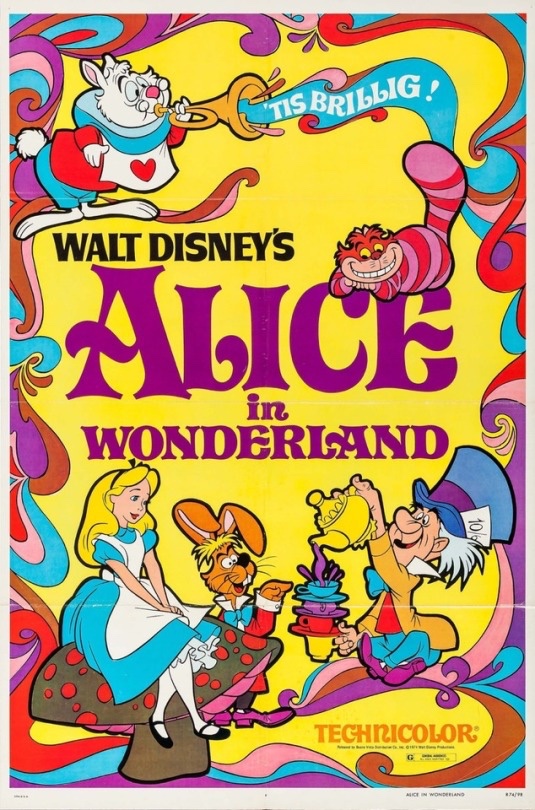
11. The Rescuers‘ nude. I absolutely loathe it when people ask me about Aladdin’s supposed dirty line, the dust cloud in The Lion King, the priest’s knee or the palace spire in The Little Mermaid, because they’re all refuted (Aladdin says “Good kitty, take off and go”. The cloud says “SFX” because it was made by the special effects department. Yes, it’s the priest’s knee, and the spire is long and rounded, very good.). I’m not sure why some believe Disney is trying to indoctrinate kids with subliminal messaging sexual innuendos. Seriously, what could possibly be gained by that??
However, the one that actually is true is in 1977’s The Rescuers. In the scene where Orville the albatross dives through New York with a very unnerved Bernard and a thrilled Miss Bianca aboard, in two frames, some puckish artist put an image of a topless woman in a window in two frames of animation. The image was scrubbed in later releases, of course, but the damage was done. Now a lot of people think Disney is trying to corrupt our children.
Yes, I know about Jessica’s dress when she is thrown from the car in in Roger Rabbit! That one’s fake, too! Can we drop it now?!
12. Cast member wages. Wage gaps are a pretty touchy topic these days, what with wealthy people getting wealthier and poor people getting poorer. But one would expect that the people who operate the best-loved rides at the Disney theme parks under the employ of one of the wealthiest companies on the planet would pay their employees a decent wage. Alas, not unlike Amazon or Walmart, just because the company makes beaucoup bucks does not mean they invest in something as sensible as fair wages. This article paints a rather troubling picture of how thousands of cast members in Florida and California suffer due to the terrible pay for operating a place as grand and illustrious as Disneyland. In 2018, it was an issue so desperate even Bernie Sanders joined in to champion for the rights of the workers. The people who cater to those who spend thousands to go to Disneyland should not be facing poverty.

13. Ending hand-drawn animation. I’ve talked about this before, but in 2004, Disney faced a grim prospect of the future of hand drawn animation. In the sixties and eighties, executives wrung their hands when profits were meager and constantly went back to the idea of losing the animation studio. However, in the early aughts, it was more of a question to adapt with the times and make more movies in CGI, like Pixar, Dreamworks, and Blue Sky were doing. Instead of just diversifying and making both, Disney went all in and tried to butcher the studios, killing the satellite offices in Florida, France, and Japan.

Yes, animation is expensive, but it became controversial as it was deemed the end of an art form for the sake of “getting with the times”. And unlike those other times, Disney actually did it, laying off thousands, only to go back and make Enchanted, The Princess and the Frog and Winnie the Pooh a few years later.
14. Theme park prices. When Disneyland opened in 1955, it was $1 for adults and 50¢ for children, and each ride cost between 10-30¢ each to ride. Adjusted for inflation, that is $9.54 and $4.77 in 2019 dollars. It was $3.50 for visitors to visit WDW in 1971, about $22.08 today. So what happened? A lot, really. Inflation happened, sure, but that doesn’t explain a one-day ticket price ballooning ten times its original price. But expansion happened. Hiring cast members happened. Ending the ride-specific ticket books happened, condensing ride and admission prices. But ultimately, I’d argue it had to do with highly conservative and paranoid executives who ran the company from Walt’s death to Eisner’s takeover in 1984 (WDW’s ticket prices were up to $18 then, around $44.27 today), and Eisner’s fiscally constrictive attitude, particularly post-1994. By the time he was ousted in 2006, it cost $67. They first breached $100 by 2015.
But why? Walt made it clear Disneyland was meant to be for everyone, so why can’t everyone go? Even if I were to discount corporate greed, the best I can come up with is wealth appeal and crowd control. Disney banks on being seen as the best, so the appeal of going to the greatest theme park in America is something a lot of people want to do. Not to mention, lines and crowds are huge deterrents, so by thinning the herd with higher prices, waits for Splash Mountain stay manageable. However, this isn’t working. Crowds and lines still flood the parks. Sooner or later, the bubble is going to burst. It may have to come down to finally opening that long-rumored Texas Disney park, because even opening more DLR and WDW parks barely stems the tide.
And that’s not even getting into paying $10 for a balloon or $4 for a bottle of Coke.
15. Extending copyright. Once upon a time, copyright law only lasted as long as the original creator was alive, long enough so he or she could profit off their creation. Under the 1909 copyright law, promising 56 years of legal protection, Mickey Mouse was set to be available in the public domain by 1984. Understandably (Sort of), Disney didn’t want that to happen. So what did they do? They lobbied Congress in 1976 and succeeded to add 27 more years to the law, till 2003. In 1997, Disney spent even more millions to further extend the copyright to 95 years, till 2023. Undoubtedly Disney is set to tackle this again, but there are serious repercussions to this than just refusing to let others play with your creation.

By restricting access to adapting copyrighted creations, creativity among the public is hindered, especially when considering how broad the law is. Not only are creative enterprisers frightened of anything just too similar enough to warrant litigation, but it also allows rampant and overzealous abuse from places like Disney to swoop in and sue with little leverage for the artist to fight back. YouTube is rife with users and abusers who want to use copyrighted properties in their own works (the law allows use in reviews and parody), but due to the lax standards, any video containing anything can be stricken with copyright warnings. Worst case scenario, published works by authors and scientists can’t be used if they pass away, leaving what could be great art or a scientific breakthrough in legal limbo for nearly a century.
Disney is not alone in this, of course, but they are the main ones responsible for dragging out copyright as long as they have.
16. The LucasArts-EA Games debacle. When Disney bought Lucasfilm Ltd in 2012, Star Wars fans were mixed. They fretted that Disney was able to easily help or hinder the franchise, and seven years later, that still seems to be the case. It was bad enough Disney put an end to all the Star Wars novels and deemed them non-canon, but the video games developed at LucasArts were where many felt Disney dropped it big time.

LucasArts had been developing Star Wars games since the early nineties. But when Disney bought out Lucasfilm, they decided to halt all in-development Star Wars games. Several months later, it was announced that EA Games would be producing them for the next ten years. It’s bad enough they shut down the games LucasArts were working on, and it’s bad enough they signed with a company known for its anti-consumerist practices, employee abuse, and frequent acquisitions (Hey, wait a second…), but soon they added loot crates to the game. For those who don’t know, loot crates are in-game purchases that may include power-ups or useless add-ons. Because they require real money and no guarantee of a good result, some officials have considered this gambling, which is highly frowned upon, particularly when the industry is aimed at children.
In the end, Disney is no angel. In a way, it hurts more because we have let Disney into our hearts. Yeah, they’re a corporation, but damnit, it’s Disneyland and Winnie the Pooh and pirates and mermaids and princesses and clamshell VHS cases and collectible glasses and Happy Meal toys and that one t-shirt you wore all the time and never washed!
Death of the Author
There’s a concept in 20th century literary criticism known as “death of the author”. It essentially means that an author’s intent should hold no bearing on the work itself. Lots of think pieces have been written on J.R.R. Tolkien’s famous works and his attitudes concerning race, politics, and his personal involvement in WWI. This is understandable, considering there are definite allegories at play, intentional or not. Comic book writer Frank Miller is known for his works on Batman, but when you start to look at All-Star Batman and Robin or Holy Terror, you come to see how they turn out because in his interviews, he rarely holds back on his misogynistic, racist, authoritarian views.
But what if their work has no reflection on who they are? Or what if what they’ve done are who they are is so abhorrent, even though their work is incredible?

This painting is called L’Etoile by Edgar Degas. Lovely, isn’t it? It’s soft, graceful, and sophisticated. It’s a striking piece. Now what if I told you Degas was anti-Semitic? Would you still appreciate this painting? I’m sure you would, but your stomach might churn a little, because you don’t want to think a disgusting person could ever produce something of value. Today, our entertainment is full of wife beaters, drug users, hate mongers, conspiracy theorists, pedophiles, rapists, religious zealots, drinkers, even murderers, and yet our allegiances to them is touch and go, depending on who they are and what they’ve done. I went over some of these in this article I wrote way back when, particularly the ones who had history with Disney.
The problem is “death of the author” has become a lazy catch-all phrase to absolve one of guilt while they enjoy their work. And I suppose that’s what’s going on with me lately: I want to enjoy Disney as I used to. I want to watch their latest animated films, ride TRON coaster when it opens, even sign up for Disney+. But how can I? How can I hold myself a responsible and ethical person if I’m supporting a company that doesn’t hold itself to the standards it claims to hold itself to?
Can’t we all just get along?
I don’t think I’m alone in wanting Hollywood to stop with the bloodthirsty mentality and just get along. I want Star Wars to cross over with Star Trek. I want to see the Justice League battle with/alongside the Avengers. I want to see Bugs Bunny hang out with Mickey like they did in Who Framed Roger Rabbit. But as unlikely as that remains due to studio competition, it’s become equally as likely since Disney has been amassing so many other studios. What Disney seems to forget is competition is actually healthy for Disney, and this is historically proven.
When Disney started out in the twenties, the Alice comedies, Oswald, and Mickey’s had to compete with other silent features by having better animation, funnier gags, and with Mickey, sound. By the forties, Walt used artistic skill in animation to compete against the likes of Warner Brothers and Tom and Jerry cartoons. By the sixties, when shorts were a dying art and almost no one was making theatrical animated films, the studio had no need to try that hard. Why bother when you’re the king and there’s no one to challenge you? As a result, the film output got less and less ambitious. You may love Robin Hood, The Aristocats, or The Rescuers, but would you call them artistically or thematically profound?

They didn’t really return to form until the mid-to-late eighties. A lot of reasons exist as to why it happened, but I still think a big contributor was Don Bluth, a former Disney animator who left the mouse in 1979 to build his own studio. He ended creating some of the best-loved animated films of the decade: The Secret of NIMH (1982), The Land Before Time (1988), An American Tail (1986), and All Dogs go to Heaven (1989). At a time when studio executives thought no one liked animated cartoons because returns in Disney films were dwindling, Bluth proved quality would win out above all, and forced Disney to wise up and make movies worth going to see in theaters. It assisted in the rise on the nineties renaissance we all know and love now.
So if Disney continues to consume everything in its path, they run the risk of growing complacent. We demand Hollywood give us good, quality entertainment, and while good movies drive ticket sales, they’re not easily quantifiable. Of course, that’s being optimistic. Disney getting watered down is the least of our problems.
The future has arrived today
Monopoly isn’t just a board game. And even though Disney passed the inspection of anti-trust laws when they bought Fox, it’s not exactly comforting. After all, if Disney could spend so much to extend copyright laws, how hard can it be to get approval on one massively powerful studio absorbing another? And even if they are unable to acquire Warner Brothers or Universal, what’s to stop them from controlling the market, setting the standards and bullying the competition into submission? Far be it from me to invoke the “slippery slope” fallacy, but tell me that doesn’t sound like a real, terrifying possibility.
And that, my friends, is my conundrum in a nutshell. How can I enjoy my favorite shows, movies, and rides when they’re produced by a company has done horrible things and may plunge us into another 1984?

I guess if I had to come up with any sort of suggestion, it’s to invest only in what we approve of. Of course, I dare not be naïve enough to say this will be enough, but if it damages their bottom line, they’ll rectify it. While no one will stop buying annual passes, eventually the prices will rise so high they’ll be unattainable. I still squirm at Disney having their own streaming service, and maybe others feel enough of the same way.
Another way we can prod Disney in the right direction is to make it known on the internet. The only thing Disney cares about besides money is its image. They want us to think of ol’ Uncle Walt and his rags to riches story. It’s why they won’t touch Song of the South. If enough people shout long and hard enough on social media, Disney will have no choice but to rectify the changes, but only if we’re united and specific. And no, I don’t mean petitioning them to remake Last Jedi, I mean real, positive change. And not just griping, either. Offer suggestions how to improve, because “Disney live action remakes suck” isn’t helpful.
I know my suggestions aren’t terribly unique, insightful, or effective, but they’re all I’ve got. And I hope I’ve got you to start thinking about what you can do to help the company be better than what they are, and make us proud to be Disney fans once again.



